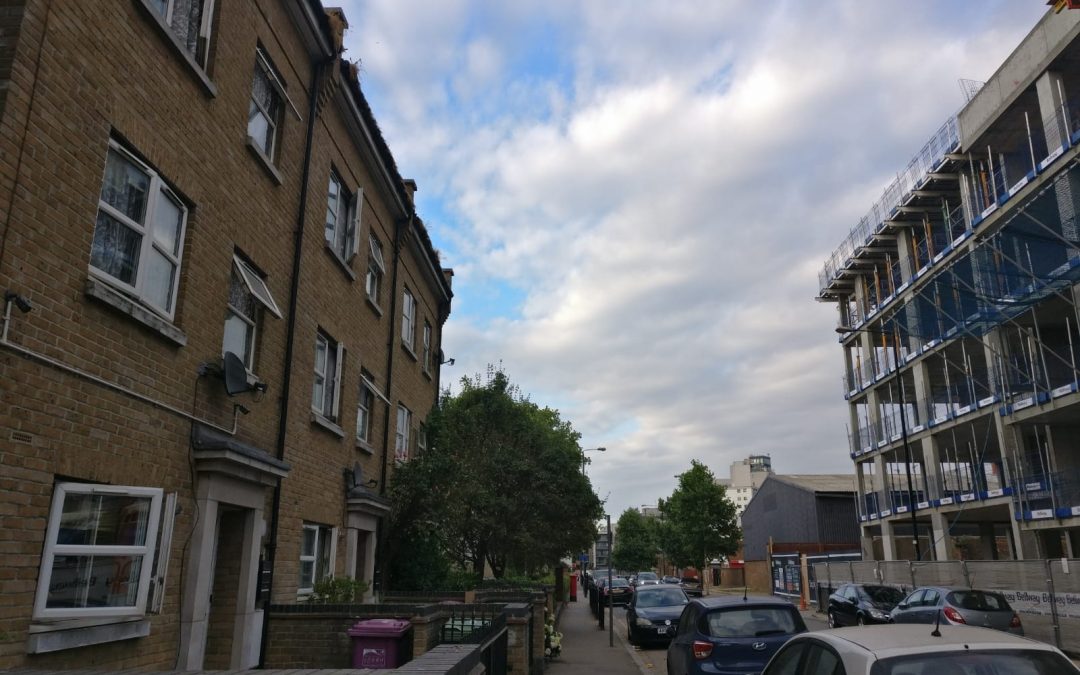Background:
Complaints have been received from local residents, the bus garage and local police regarding the following issues:
- Illegal parking during Control Parking Zone hours Mon-Fri 8:30 to 5:30 in Bow Common Lane.
- Obstruction to traffic flow during Evenings and Weekends due to vehicles parked on both sides of the street, causing delays to emergency vehicles and creating a potential fire hazard.
Findings / Analysis:
Bow Common Lane is a narrow street, the width varies between 6m and 8.5m which is not sufficient for parking on both sides of the carriageway, there is a single yellow line on the south-west side and parking bays on the northeast side of the Street.
Vehicles parked on single yellow lines during evenings and weekends cause issues to traffic flow and add to poor visibility for drivers. This is also a bus route and any vehicles parked on both sides of the road can repeatedly block traffic, this is affecting traffic flow especially prohibiting large vehicles such as buses which are having to constantly give way to oncoming traffic and delaying journeys times.
Recommendations:
Following are the proposed parking layout changes to ease traffic flow in the area.
Bow Common Lane:
(1). Change single yellow line to double yellow lines on both side of Bow common Lane between Bow Common Bridge and Devons Road.
(2). Change single yellow line to double yellow line on the south west side Bow Common Lane between Burdett Road and Devons Road (as per above map)
Equality impact:
Safer for the Cyclist, improve road safety for motorist and pedestrians. Better traffic flow, faster bus journeys and improved air quality.
Reduces anti-social behaviour among drivers caused by parking stress
Risk Management Implications:
Introduction of yellow lines as means of parking restraint remains one of our most effective control tools available in directly affecting the impact of traffic levels on the local environment and public safety.
Failure to introduce double yellow lines may increase the traffic issue and other related road safety risks at the identified section resulting from inconsiderate parking.
Statement of Reasons
The London Borough of Tower Hamlets has a duty under section 122 of the Road Traffic Regulation Act 1984 when making Traffic Management Orders to consider the expeditious, convenient and safe movement of traffic and other traffic (including pedestrians) and the provision of suitable and adequate parking facilities on and off the highway.
Under the powers granted by Section 6(1)(b) of the Road Traffic Regulation Act 1984, the proposals above are being made for following reasons, as set out in section 1(1) of the Act:
(c) for facilitating the passage on the road or any other road of any class of traffic (including pedestrians).
(f) for preserving or improving the amenities of the area through which the road runs.
Financial Implications:
The total cost of the TMO and related advertisement is around £5000. This can be met from the Parking Development Budget
Process
Once approved, these proposals will be published for public consultation. The legal process requires that formal consultation takes place by notifying any statutory consultees, such as the Metropolitan Police, publishing notices in the London Gazette and a local paper (East End Advertiser) and such other methods as the authority deems appropriate. With respect to other appropriate methods, this Council fixes notices to lamp columns in the vicinity of the proposed schemes and posts notifications to the Council’s LYN application.
The minimum standard consultation period is 21 days however if officers believe that there is sufficient reason to do so then they may extend it. If objections are received outside the statutory period then there is no statutory requirement to consider them however officers may do so.
If objections are received to the proposals during this period then officers will make recommendations for consideration by the Divisional Director, Public Realm. The Divisional Director will subsequently make a decision on how to proceed.
If no objections are received then officers will proceed with implementation of the proposals without any consideration or further approval being required.


Recent Comments